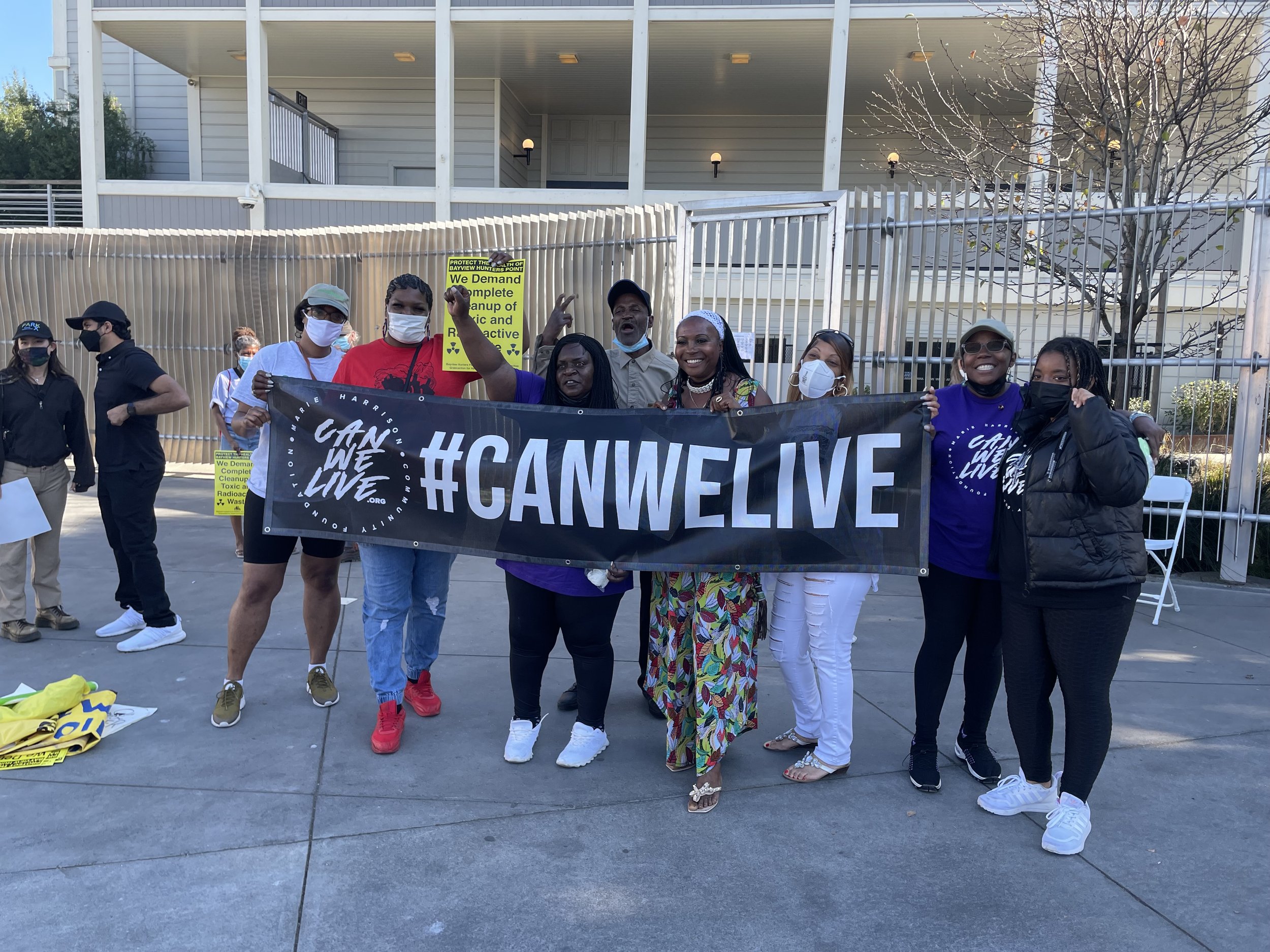Rally for a full cleanup of the toxic Hunters Point Shipyard!
On Saturday, February 12, 2022, the Marie Harrison Community Foundation gathered with nearly 50 families, activists, community members, and local organizations in the heart of Bayview at Third and Evans to demand a cleanup of the radioactive waste at the Hunters Point Shipyard. The shipyard is a federal Superfund site, a longtime source of harmful radiation throughout the historically Black Bayview Hunters Point area.
MHCF's founder, Arieann Harrison, walks in the footsteps of her mother, Marie Harrison, and the other leaders from the area who since the 1960s have battled administrations and big business to keep the environment around their homes and families safe.
"When it comes to our community ills, people love to holler, 'Well, money doesn’t fix everything.' But it only doesn’t fix everything when it comes to us, right?” – Arieann Harrison
‘We feel abandoned’: Bayview protest highlights ongoing toxic waste scandal
Community demands excavation and removal of Hunters Point Naval Shipyard radioactive residue, with local oversight.
By TOM MOLANPHY - 48hills.org
FEBRUARY 14, 2022
Arieann Harrison teams up with Greenaction, fellow Bayview Hunters Point partners fighting for clean air and environmental justice
At the forefront of the environmental justice movement, Arieann Harrison partners with Greenaction's crusades for cleaner air in Bayview Hunters Point neighborhoods.
HUNTERS POINT COMMUNITY BIOMONITORING PROGRAM
BIOMONITORING REPORT: Arieann Harrison
AUTHOR: Dr. Ahimsa Porter Sumchai
PCP: Kaiser San Francisco
Arieann Harrison is a 51-year-old nonprofit administrator and daughter of Marie Harrison, a pioneering environmental health and justice advocate in Bayview Hunters Point who died in May of 2019 following a cardiopulmonary arrest due to fibrotic lung disease caused by exposure to air pollution. Arieann lived for 8 years in a family home located at 730 Innes Avenue, in a region that is the site of the Hunters Point Naval Shipyard’s north entry gate and the former site of the PG&E Hunters Point power plant.
The region is called India Basin. It is documented by the BAAQMD to be a site of significant air pollution. Arieann and her son were active in the environmental justice movements that shut down the power plant and heightened oversight of the shipyard cleanup. Arieann’ son was the “poster child” for the power plant closure movement. He suffered from upper airway symptoms of toxic exposure.
Arieann founded a non-profit in her mother’s memory and administered a Veterans Administration program named after her father's name. Her father died of advanced colon cancer that had gone undetected for years. His death was a source of extreme hardship for the Harrison family, and her mother relocated to the Stockton region.
Arieann is strongly committed to health and social justice, and to family and community. She reports symptoms linked to environmental toxic exposure, including a non-eczematous, pruritic rash and chronic congestion. Her medical history is significant for chronic pain due to premature DJD of major joints and lumbar spine.
Her BMI is >40 and she has evident valgus deformity of knees that restricts her mobility. She is prescribed the NSAID Motrin. Additionally, she has chronic lower extremity, pitting edema, and hypertension, and is prescribed the NSAID ibuprofen. Her report of episodic abdominal pain warrants further workup to exclude NSAID-induced gastritis, peptic ulcer disease, or gallbladder disease. She is a non-smoker.
The Genova Diagnostics CUEP was collected on January 19, 2021. The findings are highly significant and include a battery of carcinogenic metals and radioactive biomarkers detected in concentrations high-normal to dangerously elevated. They include antimony, cadmium, cesium, nickel, niobium, rubidium, thallium, chromium, copper, manganese, vanadium, and zinc. Arsenic is detected in a concentration of 32 ug/g and uranium is detected in a concentration of 0.016 ug/g creatinine – within reference range but approaching maximum allowable levels for the normal population.








